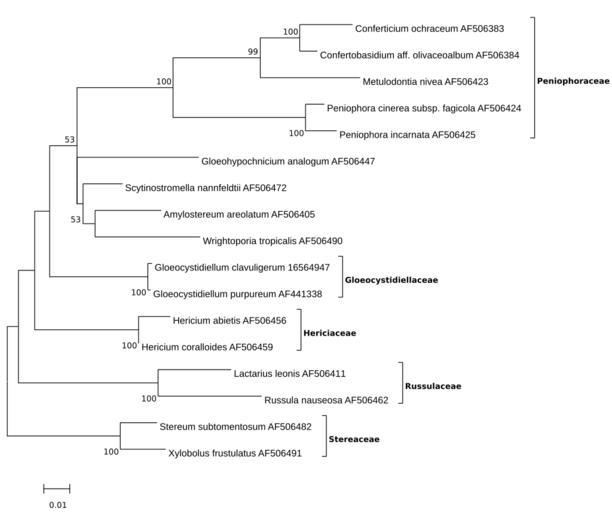MAKE A MEME
View Large Image

| View Original: | Metulodontia-Maximum-Likelihood.svg (495x413) | |||
| Download: | Original | Medium | Small | Thumb |
| Courtesy of: | commons.wikimedia.org | More Like This | ||
| Keywords: Metulodontia-Maximum-Likelihood.svg Figure Molecular Phylogenetic analysis of Metulodontia by the Maximum Likelihood method<br/> The evolutionary history was inferred by using the Maximum Likelihood method based on the Kimura 2-parameter model 1 The tree with the highest log likelihood -5311 8139 is shown The percentage of trees in which the associated taxa clustered together is shown next to the branches Initial tree s for the heuristic search were obtained by applying the Neighbor-Joining method to a matrix of pairwise distances estimated using the Maximum Composite Likelihood MCL approach A discrete Gamma distribution was used to model evolutionary rate differences among sites 5 categories +G parameter 0 4787 The rate variation model allowed for some sites to be evolutionarily invariable +I 56 3336 sites The tree is drawn to scale with branch lengths measured in the number of substitutions per site The analysis involved 17 nucleotide sequences All positions with less than 95 site coverage were eliminated That is fewer than 5 alignment gaps missing data and ambiguous bases were allowed at any position There were a total of 1379 positions in the final dataset Evolutionary analyses were conducted in http //megasoftware net/ MEGA6 2<br/> 1 Kimura M 1980 A simple method for estimating evolutionary rate of base substitutions through comparative studies of nucleotide sequences Journal of Molecular Evolution 16 111-120 <br/> 2 Tamura K Stecher G Peterson D Filipski A and Kumar S 2013 MEGA6 Molecular Evolutionary Genetics Analysis version 6 0 Molecular Biology and Evolution30 2725-2729 <br/> ; List of GenBank Sequences http //www ncbi nlm nih gov/nuccore/AF506425 Peniophora incarnata AF506425 http //www ncbi nlm nih gov/nuccore/AF506424 Peniophora cinerea subsp fagicola AF506424 http //www ncbi nlm nih gov/nuccore/AF506405 Amylostereum areolatum AF506405 http //www ncbi nlm nih gov/nuccore/AF506383 Conferticium ochraceum AF506383 http //www ncbi nlm nih gov/nuccore/AF506384 Confertobasidium aff olivaceoalbum AF506384 http //www ncbi nlm nih gov/nuccore/16564947 Gloeocystidiellum clavuligerum 16564947 http //www ncbi nlm nih gov/nuccore/AF441338 Gloeocystidiellum purpureum AF441338 http //www ncbi nlm nih gov/nuccore/AF506447 Gloeohypochnicium analogum AF506447 http //www ncbi nlm nih gov/nuccore/AF506456 Hericium abietis AF506456 http //www ncbi nlm nih gov/nuccore/AF506459 Hericium coralloides AF506459 http //www ncbi nlm nih gov/nuccore/AF506411 Lactarius leonis AF506411 http //www ncbi nlm nih gov/nuccore/AF506423 Metulodontia nivea AF506423 http //www ncbi nlm nih gov/nuccore/AF506462 Russula nauseosa AF506462 http //www ncbi nlm nih gov/nuccore/AF506472 Scytinostromella nannfeldtii AF506472 http //www ncbi nlm nih gov/nuccore/AF506482 Stereum subtomentosum AF506482 http //www ncbi nlm nih gov/nuccore/AF506490 Wrightoporia tropicalis AF506490 http //www ncbi nlm nih gov/nuccore/AF506491 Xylobolus frustulatus AF506491 own 2014-09-09 Thkgk Cc-zero Metulodontia | ||||